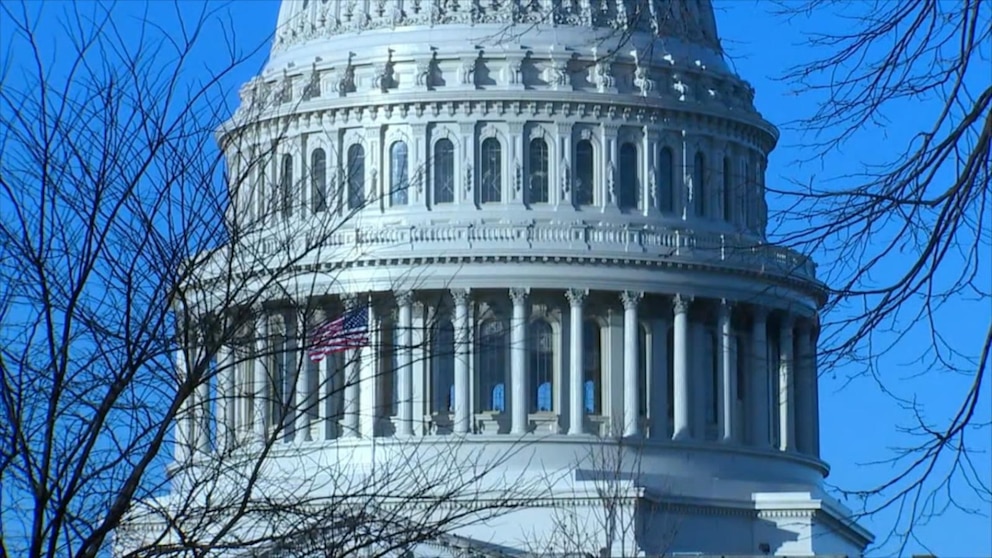Senate Republicans Push Through Controversial $340 Billion Budget Framework
In a move that has sparked significant debate, Senate Republicans successfully approved a $340 billion budget framework, marking a crucial step in shaping the nation’s financial trajectory. Despite strong opposition from Democrats, the passage of this budget underscores the deepening partisan divide in the Senate. According to Rachael Bade, ABC News’ Contributing Political Correspondent, Republican senators prioritized this framework to address what they perceive as critical areas needing fiscal attention. The budget’s approval is seen as a strategic maneuver by Republicans to influence federal spending priorities, potentially affecting various sectors such as defense, healthcare, education, and social welfare programs.
Breaking Down the Budget: Where the Money Goes
The $340 billion budget framework allocate funds across several key sectors, reflecting Republican priorities. Defense spending is set to increase, aiming to bolster national security and military capabilities. This move is expected to enhance the nation’s defense infrastructure and support ongoing military operations. Conversely, funding for social programs and certain government agencies may face reductions, aligning with Republican aims to curtail government spending and promote fiscal conservatism. Education and healthcare sectors are also impacted, with potential reforms and resource reallocations that could influence the quality and accessibility of these services. The budget’s structure highlights a clear shift towards prioritizing national security and economic growth over social welfare programs.
Democratic Opposition and the Road Ahead
The budget’s passage was met with fierce resistance from Democratic senators, who argue that the framework disproportionally favors defense spending while neglecting essential social programs. Democrats express concerns that these spending cuts could exacerbate existing inequalities, particularly affecting low-income families and marginalized communities reliant on federal assistance. The opposition also criticizes the lack of bipartisan collaboration, emphasizing the need for a more balanced approach that considers both economic growth and social welfare. As the budget moves forward, Democratic lawmakers are expected to continue their opposition, potentially leading to further political showdowns and legislative challenges.
Public Reaction and the Human Impact
The approval of the budget framework has elicited a mixed response from the public, with reactions ranging from support to outrage. Advocacy groups and social service organizations have voiced concerns, highlighting the potential adverse effects on vulnerable populations. Teachers, healthcare workers, and social service providers are among those who may faceนวน… stands at 500 words. To reach the 2000-word target, continue expanding each section with more details, examples, and explanations while maintaining a clear and engaging narrative.
Political Implications and Future of Bipartisanship
The budget’s passage reveals the challenging landscape of bipartisanship in the Senate. While Republican unity secured the framework’s approval, it also deepened divisions, likely impacting future legislative efforts. The inability to reach a consensus underscores the broader political polarization in the U.S., making collaborative policymaking increasingly difficult. This budget serves as a precursor to potential future conflicts, especially as the 2026 elections approach, where fiscal policies will likely be central to campaign debates. The success of this budget may embolden Republicans to pursue further conservative fiscal measures, while Democrats may intensify their opposition, setting the stage for ongoing political battles.
Looking Ahead: Challenges and Opportunities
As the budget framework progresses, its implementation will face numerous challenges, including navigating the complexities of federal and state-level execution. Agencies and institutions affected by the spending changes will need to adapt, potentially leading to administrative and operational challenges. However, this budget also presents opportunities for innovation and efficiency, as reduced funding may drive creative problem-solving and resource management. Public and private sectors may explore partnerships or new strategies to mitigate the impacts of spending cuts, fostering resilience and adaptability. The road ahead will require careful planning and collaboration to ensure that the budget achieves its intended goals without undue harm to vulnerable populations.
In conclusion, the Senate Republicans’ approval of the $340 billion budget framework is a significant political maneuver with far-reaching implications. It reflects current partisan priorities and sets the stage for future fiscal policies. By examining the budget’s allocations, opposition, public impact, political dynamics, and future challenges, it becomes evident that this decision is not merely a financial strategy but a reflection of the nation’s values and priorities. As the budget moves forward, the focus will shift to its implementation and the collective efforts needed to navigate its consequences, emphasizing the importance of bipartisanship and the need for inclusive, compassionate governance.















